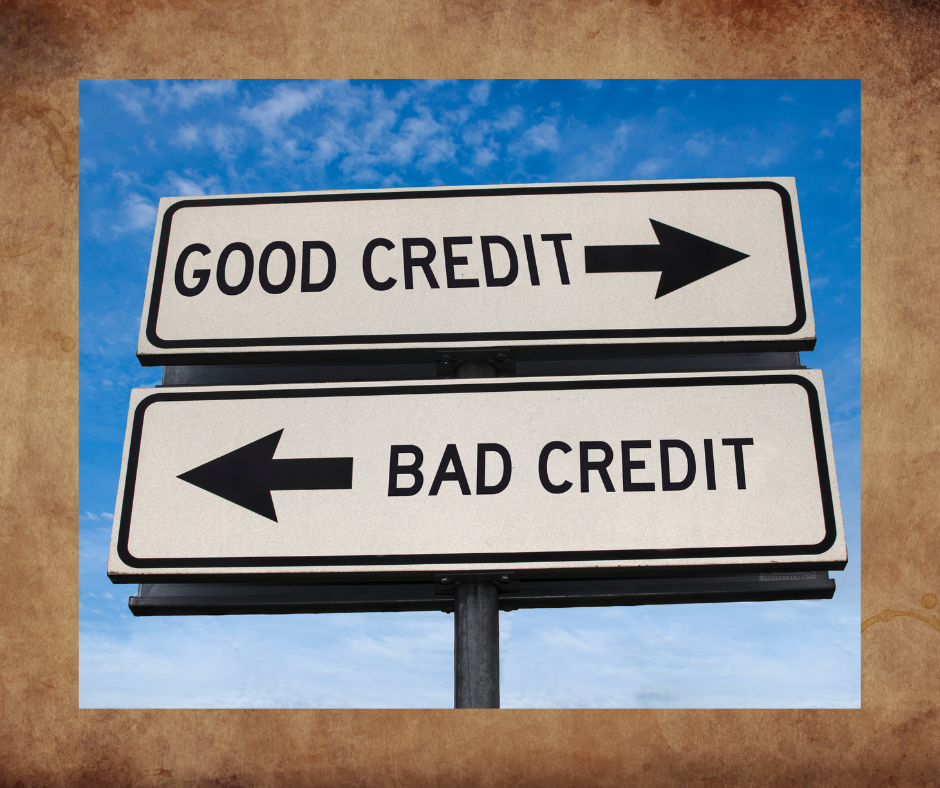Navigating the World of Credit Scores: Deciphering the 590 Credit Score
Title: Navigating the World of Credit Scores: Deciphering the 590 Credit Score

Table of Contents
Introduction
II. Understanding Credit Scores
- What is a Credit Score?
- How Credit Scores are Calculated
- Importance of a Good Credit Score
III. What Does a 590 Credit Score Mean?
- Credit Score Ranges
- Factors Contributing to a 590 Score
- Implications of a 590 Credit Score
IV. Reasons for a 590 Credit Score
- Late Payments
- High Credit Card Balances
- Collections and Defaults
- Bankruptcy or Foreclosure
- Limited Credit History
V. Impact of a 590 Credit Score
- Difficulty Obtaining Credit
- High-Interest Rates
- Limited Borrowing Options
- Employment and Housing Implications
VI. Improving a 590 Credit Score
- Steps to Take
- Payment History
- Credit Utilization
- Collections and Defaults
- Building a Positive Credit History
- Creating a Credit Repair Plan
VII. Credit-Building Strategies
- Secured Credit Cards
- Becoming an Authorized User
- Responsible Credit Use
- Monitoring Your Credit
VIII. Seeking Professional Help
- Credit Counseling
- Credit Repair Services
IX. Maintaining and Monitoring Your Progress
- Regularly Checking Your Credit Report
- Tracking Credit Score Changes
- Staying Committed to Financial Responsibility
X. Conclusion

Navigating the World of Credit Scores: Deciphering the 590 Credit Score
Introduction:
Your credit score is more than just a number; it’s a financial snapshot that can significantly impact your life. You’re not alone if you find yourself with a 590 credit score. Many people face similar challenges when it comes to managing their credit. But don’t worry; this article will help you understand what a 590 credit score means, why it’s essential, and most importantly, how to improve it. For a good guide to have as an e-book that gives more in-depth detail, please check out our guide book on Amazon https://amzn.to/3Nx4hJR
Quick Tips:
- Check your credit report regularly to spot errors or inaccuracies.
- Pay your bills on time, as late payments can significantly negatively impact you.
- Reduce credit card balances to lower your credit utilization ratio.
- Don’t close old credit accounts; they contribute positively to your credit history.
- Consider seeking professional advice from credit counseling services if you’re overwhelmed.
Understanding Credit Scores:
Before diving into the specifics of a 590 credit score, let’s begin by understanding what credit scores are and why they matter.
What is a Credit Score?
A credit score is a three-digit number that represents your creditworthiness. Lenders use this number to assess the risk of lending to you. The higher your score, the more likely you will be approved for loans and credit cards at favorable terms.
How Credit Scores are Calculated:
Credit scores are calculated using various factors, each carrying a different weight:
- Payment History: 35%
- Credit Utilization: 30%
- Length of Credit History: 15%
- Types of Credit: 10%
- New Credit Inquiries: 10%
Now, let’s delve into what a 590 credit score means and why it’s crucial.
What Does a 590 Credit Score Mean?
A credit score of 590 falls into the “poor” range, typically between 300 and 629. While it’s not the worst score possible, it comes with challenges.
Credit Score Ranges:
Here’s a breakdown of credit score ranges:
| Credit Score Range | Creditworthiness |
| 300-629 | Poor |
| 630-689 | Fair |
| 690-719 | Good |
| 720-850 | Excellent |
Factors Contributing to a 590 Score:
Understanding why you have a 590 credit score can help you take steps to improve it. Here are some common factors that can contribute to a score like this:
| Factors | Impact on Score |
| Late Payments | -50 to -100 |
| High Credit Card Balances | -30 to -80 |
| Collections and Defaults | -60 to -120 |
| Bankruptcy or Foreclosure | -100 to -200 |
| Limited Credit History | Variable |
Now that you know why your credit score might be at 590, let’s explore the consequences of having this score.
Implications of a 590 Credit Score:
A 590 credit score can have several negative implications, including:
- Difficulty Obtaining Credit: Lenders may hesitate to approve your loan or credit card applications.
- High-Interest Rates: If approved for credit, you may be subject to higher interest rates, increasing borrowing costs.
- Limited Borrowing Options: Your choice of financial products may be restricted, and you may only qualify for subprime credit options.
- Employment and Housing Implications: Some employers and landlords may check your credit as part of their evaluation process, potentially affecting your job prospects and housing options.
Now that you understand the significance of a 590 credit score, let’s discuss how to improve it.
Reasons for a 590 Credit Score:
To improve your credit score, it’s essential to identify the factors that brought it down in the first place. Here are some common reasons why people end up with a 590 credit score:
- Late Payments: Missing payments on loans or credit cards can significantly impact your score.
- High Credit Card Balances: High credit card balances, especially near your credit limit, can negatively affect your credit utilization ratio.
- Collections and Defaults: Accounts that have gone into collections or resulted in defaults can drag down your score.
- Bankruptcy or Foreclosure: Major adverse events like bankruptcy or foreclosure can have a severe and long-lasting impact on your credit.
- Limited Credit History: A short credit history can make building a higher credit score challenging.
Now that you know the common culprits, let’s discuss how to address these issues and raise your score.
Impact of Negative Factors on Credit Score:
Here’s a table illustrating how much these common negative factors can drop or raise your credit score:
| Negative Factor | Impact on Credit Score |
| Late Payments | -50 to -100 |
| High Credit Card Balances | -30 to -80 |
| Collections and Defaults | -60 to -120 |
| Bankruptcy or Foreclosure | -100 to -200 |
| Limited Credit History | Variable |
Understanding these impacts will help you prioritize areas to focus on when improving your credit.
Improving a 590 Credit Score:
Now that you know what contributed to your 590 credit score, let’s discuss actionable steps to improve it.
Steps to Take:
- Payment History:
- Pay all bills on time, including credit cards, loans, and utilities.
- Consider setting up payment reminders or automatic payments to avoid future late payments.
- Credit Utilization:
- Aim to keep credit card balances below 30% of your credit limit.
- Pay down existing credit card debt to reduce your credit utilization ratio.
- Collections and Defaults:
- Contact creditors to negotiate payment plans or settlements for outstanding debts.
- Verify that any reported collections or defaults are accurate, and dispute errors if necessary.
- Building a Positive Credit History:
- Consider becoming an authorized user on someone else’s credit card with a good payment history.
- Open a secured credit card or credit-builder loan to establish positive credit.
Creating a Credit Repair Plan:
To systematically improve your credit, consider the following steps:
- Review Your Credit Report: Obtain free copies of your credit reports from all three major credit bureaus (Experian, Equifax, and TransUnion). Check for errors, inaccuracies, or fraudulent accounts.
- Set Realistic Goals: Credit repair takes time, and achieving goals for score improvement is essential.
- Budgeting: Create a budget to manage your finances effectively and allocate funds for debt repayment.
- Pay Down Debt: Focus on paying off high-interest debts to reduce your debt burden.
- Seek Professional Help: If you’re overwhelmed or unsure where to start, consider consulting with a reputable credit counseling service or a credit repair agency.
- FREE Budget Worksheet: click the link and be sure to save a copy in your files. https://firststepcounseling.com/budget-worksheet/
Credit-Building Strategies:
Here are some strategies to help you build positive credit:
- Secured Credit Cards: Apply for a secured credit card, which requires a security deposit but can help you establish or rebuild credit with responsible use.
- Becoming an Authorized User: Ask a family member or friend with good credit to add you as an authorized user on their credit card account.
- Responsible Credit Use: Use credit responsibly by paying bills on time and avoiding maxing out credit cards.
- Monitoring Your Credit: Keep a close eye on your credit report and score to track your progress and address any issues promptly.
Seeking Professional Help:
If you find it challenging to manage and improve your credit score independently, seeking professional assistance is a viable option.
Credit Counseling:
Credit counseling agencies can help you:
- Create a budget and financial plan.
- Negotiate with creditors to lower interest rates or settle debts.
- Provide education on credit management.
Credit Repair Services:
Credit repair companies can assist you with the following:
- Identifying and disputing inaccuracies on your credit report.
- Negotiating with creditors on your behalf.
- Guiding credit improvement strategies.
However, be cautious when choosing a credit repair service and ensure they are reputable and comply with all legal regulations.
Maintaining and Monitoring Your Progress:
Once you start improving your credit score, it’s crucial to maintain your efforts and monitor your progress.
Regularly Checking Your Credit Report:
Check your credit report annually or more frequently if you’re actively working on credit improvement. You can obtain free copies of your information from each bureau annually through AnnualCreditReport.com.
Tracking Credit Score Changes:
Track your credit score through free credit monitoring services or credit card providers that offer score tracking. This will help you see the impact of your efforts and identify areas that still need improvement. Keep track of your expenses, payments and progress with our FREE Budget Worksheet: https://firststepcounseling.com/budget-worksheet/
Staying Committed to Financial Responsibility:
Improving your credit score is not a one-time task; it requires ongoing financial responsibility. Continue making on-time payments, managing your credit wisely, and avoiding behaviors that could negatively impact your score.
Conclusion:
In conclusion, a 590 credit score is not the end of the road. It’s a starting point on your journey to better financial health. By understanding the factors contributing to your score, taking proactive steps to address issues, and responsibly managing your credit, you can steadily improve your creditworthiness. Remember, patience and persistence are vital to achieving a higher credit score and enjoying the financial opportunities it brings. Remember, we do have an excellent e-book guide available on Amazon this e-book gives more in-depth detail, Please check out our guide book on Amazon: https://amzn.to/3Nx4hJR